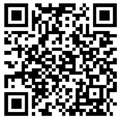Paris Mou,U.S Coast Guard以及AMSA的船舶禁令
3.AMSA
.1 Refusal of access for 3 months:
A vessel has been detained then released with conditions to carry out corrective action, but returns to Australia without the corrective action having been taken.
A vessel has incurred three detentions in a two years period and has not been previously issued a direction.
.2 Refusal of access for 12 months – where a vessel has previously been issued a direction and is detained within two years of the expiry of the refusal period under that direction (while under the same operator). The nature of previous detentions that resulted in the initial direction may also be taken into consideration.
.3 Refusal of access for 24months - where a vessel has previously been issued two directions and is detained within two years of the expiry of the refusal period under the second direction (while under the same operator). The nature of previous detentions that resulted in the initial direction may also be taken into consideration.
东京备忘录暂且没有相关禁令,但是澳大利亚海事局对此已经有了自己的规定:
3个月内禁止进港:
船舶受到滞留且在解除时需采取纠正措施,但返回澳大利亚时缺陷仍未进行纠正;
船舶在两年内发生三次滞留,且之前未被实施禁令。
12个月内禁止进港:
船舶曾被实施禁令,且在禁令期满后两年内发生滞留(船舶经营人未发生变化)。导致首次禁令的滞留因素仍可作为本次禁止进港的原因。
24个月内禁止进港:
船舶曾被实施过两次禁令,且在第二次禁令期满后两年内发生滞留(船舶经营人未发生变化)。导致首次禁令的滞留因素仍可作为本次禁止进港的原因。
4. RELEVENT QUESTIONS
Please note that: The main identifier of a banned ship is the IMO number.
被实施禁令的船舶,其主要标识为IMO编号。
So when a ship is “banned” and then sold to another Party, does this transaction automatically cancel the “banned” status or does the status continue?
Answer: A ban is a measure imposed on an individual ship. Once banned, a transfer of company, flag or change in other involved parties does not revoke a ban or otherwise shorten the applicable periods mentioned.









